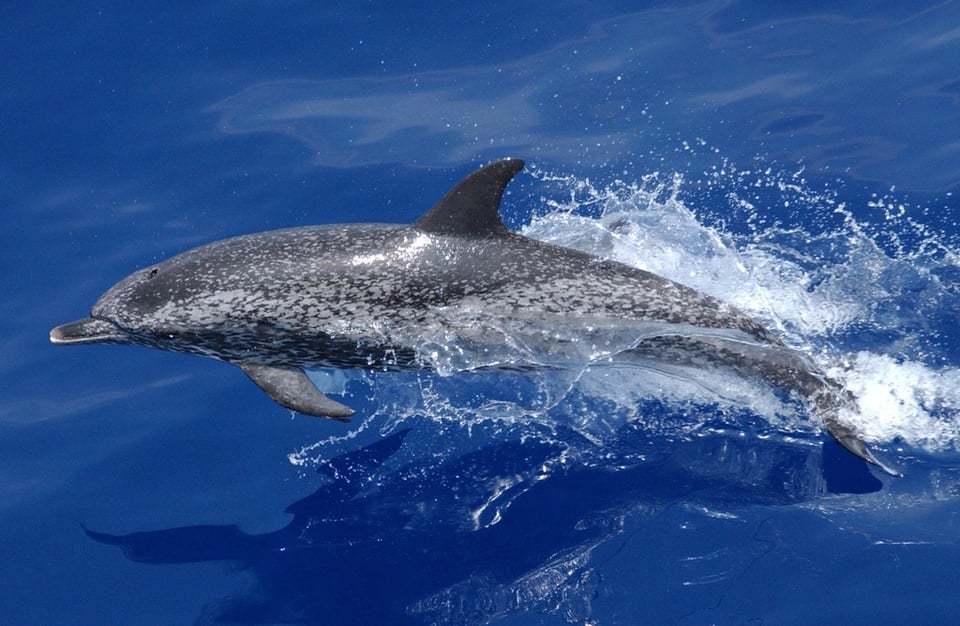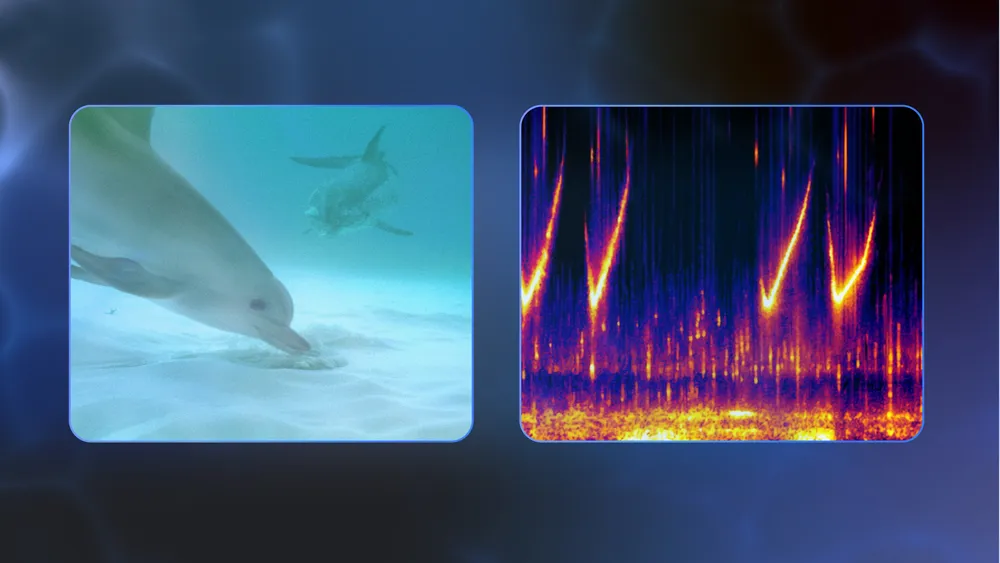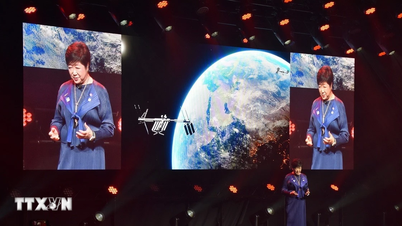 |
Stenella frontalis (Atlantic spotted dolphin) is the dolphin species chosen by scientists for research. Photo: iNaturalist . |
Recently, Google has collaborated with computer scientists at Google and marine biologists to build a large language model (LLM) designed to converse with dolphins, called DolphinGemma.
The main goal of this project is to explore and decode the complex communication methods of dolphins, and to establish the foundation for two-way interaction between humans and these marine animals.
Artificial Intelligence and How Animals Communicate
The DolphinGemma model is built on a rich dataset collected over four decades by the Wild Dolphin Project (WDP), the world's longest-running study of the Atlantic spotted dolphin ( Stenella frontalis ) population in the Bahamas.
During the study, WDP collected a large amount of underwater audio and video data, linked to individual individuals within the school, recording aspects of their social relationships and life histories.
This dataset includes pairs of sounds and corresponding behaviors, such as courtship sounds, aggression calls, and “signature whistles” that serve as individual identification markers.
 |
A mother dolphin watches her calf while it forages (left), and uses her signature whistle to call it back. An image of the sound waves of that whistle (right). Photo: Google. |
This resource provided Google researchers with the data needed to train an artificial intelligence model capable of analyzing the nuances of dolphin communication, similar to the way large language models process human language.
DolphinGemma works on an audio input - audio output mechanism, allowing the model to "listen" to dolphin sounds and predict the next sound sequence, thereby capturing the structure in their communication system.
The use of artificial intelligence is dramatically increasing the speed at which animals can decode their communications. Large computer programs can process a wide range of sounds, from dog barks to bird calls. They recognize familiar sound patterns and use their surroundings to guess what the animal is trying to say.
Dolphins, which belong to a group of marine mammals called "Cetacea," are particularly suitable research subjects because of their complex social structures and diverse communication methods. Their high-frequency "clicks" and whistles are relatively easy to record and feed into computers for AI to learn to analyze their "grammar."
Talk to dolphins with your smartphone
One potential application of DolphinGemma is the development of the CHAT (Cetacean Hearing Augmentation Telemetry) system. This system, deployed on modified smartphones, is capable of generating artificial sounds characteristic of dolphins.
These sounds are “attached” to things that dolphins often use or like, such as seagrass or scientific equipment. The goal is to get the dolphins curious enough to imitate the whistles the machine makes to “ask” for those things, just like we are practicing simple conversation with each other.
The Google Pixel 9 phone is placed in the CHAT system hardware. Photo: Google. |
Future versions of CHAT will be equipped with more powerful processing power and smarter algorithms to improve response speed and clarity in human-dolphin interactions. However, deploying more complex communication methods in the wild raises important ethical issues that need to be considered.
Google plans to release DolphinGemma as an open source model this summer, allowing researchers around the world to apply it to studies of other dolphin species.
DolphinGemma is expected to be a significant step forward in improving understanding of one of the marine animals most familiar to humans.
While the ability to have complex conversations with dolphins remains a long-term goal, the potential for two-way communication that this model offers is a promising sign of the groundbreaking possibilities that artificial intelligence can bring to the field of animal behavior research.
Source: https://znews.vn/google-phat-trien-ai-giup-giao-tiep-voi-ca-heo-post1546286.html


![[Photo] Prime Minister Pham Minh Chinh meets with the Policy Advisory Council on Private Economic Development](https://vphoto.vietnam.vn/thumb/1200x675/vietnam/resource/IMAGE/2025/5/8/387da60b85cc489ab2aed8442fc3b14a)
![[Photo] President Luong Cuong presents the decision to appoint Deputy Head of the Office of the President](https://vphoto.vietnam.vn/thumb/1200x675/vietnam/resource/IMAGE/2025/5/8/501f8ee192f3476ab9f7579c57b423ad)
![[Photo] National Assembly Chairman Tran Thanh Man chairs the meeting of the Subcommittee on Documents of the First National Assembly Party Congress](https://vphoto.vietnam.vn/thumb/1200x675/vietnam/resource/IMAGE/2025/5/8/72b19a73d94a4affab411fd8c87f4f8d)
![[Photo] General Secretary To Lam begins official visit to Russia and attends the 80th Anniversary of Victory over Fascism](https://vphoto.vietnam.vn/thumb/1200x675/vietnam/resource/IMAGE/2025/5/8/5d2566d7f67d4a1e9b88bc677831ec9d)

![[Photo] General Secretary concludes visit to Azerbaijan, departs for visit to Russian Federation](https://vphoto.vietnam.vn/thumb/1200x675/vietnam/resource/IMAGE/2025/5/8/7a135ad280314b66917ad278ce0e26fa)
















































![[Photo] Prime Minister Pham Minh Chinh talks on the phone with Singaporean Prime Minister Lawrence Wong](https://vphoto.vietnam.vn/thumb/402x226/vietnam/resource/IMAGE/2025/5/8/e2eab082d9bc4fc4a360b28fa0ab94de)


































Comment (0)